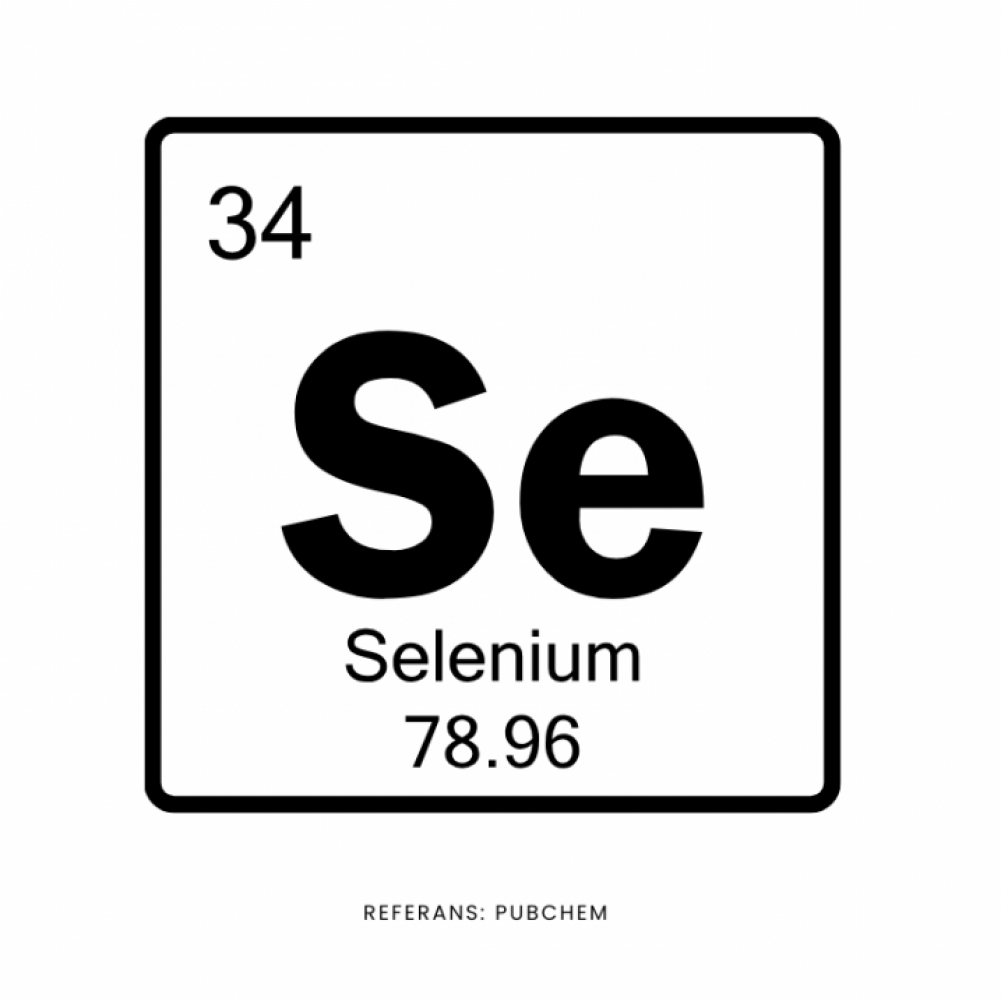
Selenium is a naturally occurring mineral element that is essential for the human body and must be obtained from externally. It is widely found in most rocks and soils in nature. It is the functionally important ion in the glutathione peroxidase molecule that supports the back defense system that supports vitamin E, which forms the first line of defense protecting membrane phospholipids from peroxidation. It saves vitamin E in the body and reduces the need for vitamin E. Selenium shows this activity by keeping glutathione active. Thus, it reduces the burden of vitamin E in the fight against peroxidation. It also increases the absorption of vitamin E along with other fats in the gastrointestinal tract and supports its retention in plasma lipoproteins.
Molecular Formula: Se
Molecular Weight: 78.97 g/mol
PubChem CID: 6326970
CAS Number: 7782-49-2
Synonyms: Elemental selenium
MeSH Pharmacological Classification:
Antioxidants: Naturally occurring or synthetic substances that inhibit or retard oxidation reactions. They counteract the damaging effects of oxidation in animal tissues.
Trace Elements: A group of chemical elements that are needed in minute quantities for the proper growth, development, and physiology of an organism.
Selenium is first metabolized to selenophosphate and selenocysteine. Selenium incorporation is genetically encoded through the RNA sequence UGA. This sequence is recognized by RNA ste loop structures called selenocysteine inserting sequences (SECIS). These structures require the binding of SECIS binding proteins (SBP-2) to recognize selenocystiene. The specialized tRNA is first bound to a serine residue which is then enzymatically processed to a selylcysteyl-tRNA by selenocystiene sythase using selenophosphate as a selenium donor. Other unidentified proteins are required as part of the binding of this tRNA to the ribosome. Selenoproteins appear to be necessary for life as mice with the specialized tRNA gene knocked out exhibited early embryonic lethality. The most important selenoproteins seem to be the glutathione peroxidases and thioredoxin reductases which are part of the body's defenses againts reactive oxygen species (ROS). The importance of selenium in these anti-oxidant proteins has been implicated in the reduction of atherosclerosis by preventing the oxidation of low density lipoprotein. Selenium supplementation is also being investigated in the prevention of cancer and has been suggested to be beneficial to immune function.